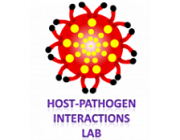Citation:
Abstract:
The role of N-glycosylation in the expression, ligand recognition, activity, and intracellular localization of a rat vesicular monoamine transporter (rVMAT1) was investigated. The glycosylation inhibitor tunicamycin induced a dose-dependent decrease in the rVMAT1-mediated uptake of [3H]serotonin. Part of this effect was due to a general toxic effect of the drug. Therefore, to assess the contribution of each of the glycosylation sites to the transporter activity, the three putative N-glycosylation sites were mutated individually, in combination, and in toto ("triple" mutant). Mutation of each glycosylation site caused a minor and additive decrease in activity, up to the triple mutant, which retained at least 50% of the wild-type activity. No significant differences were found either in the time dependence of uptake or the apparent affinity for ligands of the triple mutant compared with the wild-type protein. It is interesting that in contrast to plasma-membrane neurotransmitter transporters, the unglycosylated form of rVMAT1 distributed in the cell as the wild-type protein. Pro43 is a highly conserved residue located at the beginning of the large loop in which all the potential glycosylation sites are found. A Pro43Leu mutant transporter was inactive. It is remarkable that despite the presence of glycosylation sites, the mutant transporter was not glycosylated. Moreover, the distribution pattern of the Pro43Leu mutant clearly differed from that of the wild type. In contrast, a Pro43Gly mutant displayed an activity practically identical to the wild-type protein. As this replacement generated a protein with wild-type characteristics, we suggest that the conformation conferred by the amino acid at this position is essential for activity.

